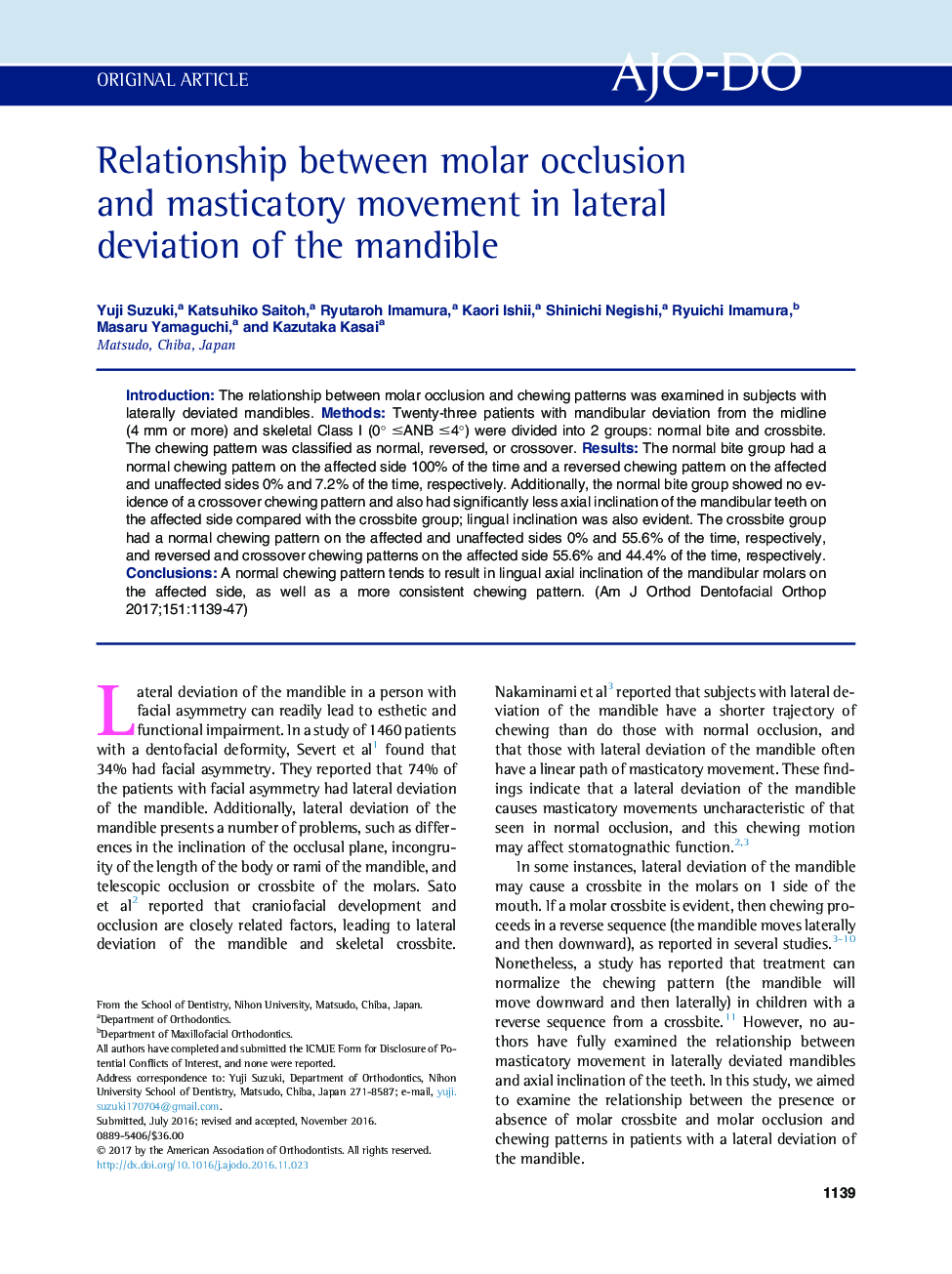| Article ID | Journal | Published Year | Pages | File Type |
|---|---|---|---|---|
| 5637613 | American Journal of Orthodontics and Dentofacial Orthopedics | 2017 | 9 Pages |
â¢Chewing was classified into 3 patterns: normal, reversed, and crossover.â¢Subjects with normal bite had a normal chewing pattern.â¢Compared with the crossbite group, the normal bite group had less axial inclination of mandibular teeth on the affected side.â¢Subjects with normal bite had lingually inclined molars on the affected side.â¢Normal chewing pattern may cause lingual inclination on the affected side and more consistent chewing patterns.
IntroductionThe relationship between molar occlusion and chewing patterns was examined in subjects with laterally deviated mandibles.MethodsTwenty-three patients with mandibular deviation from the midline (4 mm or more) and skeletal Class I (0° â¤ANB â¤4°) were divided into 2 groups: normal bite and crossbite. The chewing pattern was classified as normal, reversed, or crossover.ResultsThe normal bite group had a normal chewing pattern on the affected side 100% of the time and a reversed chewing pattern on the affected and unaffected sides 0% and 7.2% of the time, respectively. Additionally, the normal bite group showed no evidence of a crossover chewing pattern and also had significantly less axial inclination of the mandibular teeth on the affected side compared with the crossbite group; lingual inclination was also evident. The crossbite group had a normal chewing pattern on the affected and unaffected sides 0% and 55.6% of the time, respectively, and reversed and crossover chewing patterns on the affected side 55.6% and 44.4% of the time, respectively.ConclusionsA normal chewing pattern tends to result in lingual axial inclination of the mandibular molars on the affected side, as well as a more consistent chewing pattern.
